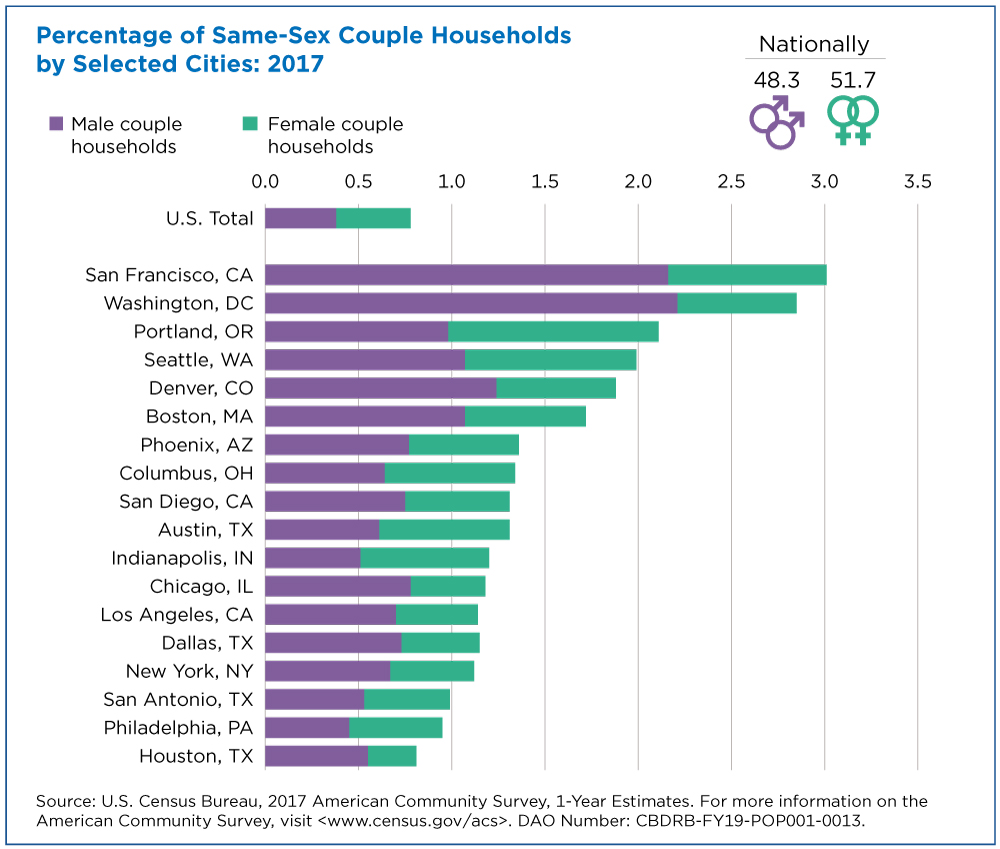
Where Same-Sex Couples Live
There were almost a million same-sex couple households in the U.S. in 2017 and just over half (51.7%) of them were female coupled households.
Same-sex households make up 0.8% of all U.S. households, but some cities, such as San Francisco, have a higher percentage of same-sex households — 3.0% — than the national rate, according to the American Community Survey.
Compared with opposite-sex couples, same-sex couples are more likely to have higher incomes, have both people employed, and be more educated.
Interestingly, while there are slightly more female same-sex couple households in the United States, male same-sex couple households are more common in cities with the most same-sex households.
The distributions do vary though. For example, about 77.4% of Washington, D.C.’s same-sex households are male compared to only 56.4% of those in Phoenix.

How Census Counts Same-Sex Couples
The Census Bureau collects data on same-sex couple households by asking how each person in the household is related to the householder (who owns or rents the home).
Households are identified as same-sex couple households if a spouse or unmarried partner is the same sex as the householder.
These households are further identified as married couples (spouses) and unmarried partners. This represents only a small portion of the LGBTQ community because it only includes coupled households.
Married same-sex couples made up about 59.4% of all same-sex households in 2017 — a rate that has more than doubled over the past 10 years. In 2008, 26.6% of all same-sex households were married couples.
Demographic Profile of Same-Sex Households
Compared with opposite-sex couples, same-sex couples are more likely to have higher incomes, have both people employed, and be more educated. They are also more likely to be interracial, but they’re less likely to have children living with them.
Same-sex married couples tend to be younger than opposite-sex married couples and less likely to own their home. Yet, same-sex unmarried partners tend to be older than their opposite-sex counterparts, and more likely to own their home.
The Census Bureau strives to reflect the American family in all its forms, and has been collecting data on household relationships since 1880.
Over the past 10 years or so, the Census Bureau conducted extensive research to improve the measurement of same-sex couples. This resulted in a revised household relationship question that was implemented in the American Community Survey in 2019, and will be included in the 2020 Census. This improved measure will allow the Census Bureau to further explore the characteristics of same-sex households, as well as the cities they’re in.
